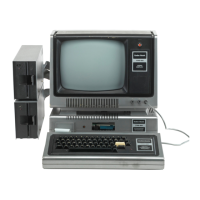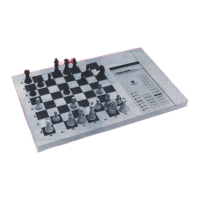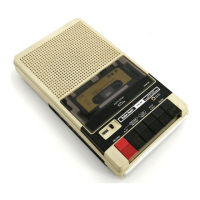Transmission of Digital Data
The
transfer
of digital data
over relatively
long
distances is generally
accomplished
by
sending data in
serial form using a single twisted
wire
pair to
connect the
transmitting and
receiving
devices. One of
two general
transmission
techniques is
commonly used, asynchronous
or
synchronous.
The
transmission
technique used in the Radio Shack
system is
asynchronous-bit-seriai.
Since
we don't use the synchronous
technique, we'll not
mention it
again.
Asynchronous transmission
does not
require
a
synchronizing
clock to
be transmitted with the
data
and, the
characters need
not
be
contiguous.
This means that
gaps
of
varying lengths
may be
present
between transmission
of
individual
characters.
The bits
which comprise a
data
character (generally from
five
to eight
bits in
length) and
synchronizing
start and
stop elements are added
to
each character as
shown in
Figure 1
.
The start element
is a
single
logic
zero
(0)
data
bit that is
added
to
the front of each
character.
The
stop
element is a
logic one
(1)
that is
assed to the end
of
each
character. The stop
element is
maintained
until the start element of
the next
character is
transmitted.
There is no upper limit to the
length
of the
stop
element.
However, there
is a lower limit that
depends
on system
characteristics.
Typical
lower
limits are
1.0,
1.42
or
2.0
data-bit intervals
(although most
modem systems use 1.0
or
2.0
stop bits).
The
negative-going
transition of the start element
defines the
location of
the data bits in
the
character
being
transmitted.
A clock
source at the
receiver is
reset
by this
transition and
is used to
locate the
center of each data bit.
There are several good reasons
for using
the asynchronous
data
transmission system.
A clock signal does
not need
to be transmitted
with the data,
thus, equipment is
simpler. Also, the characters
don't
need to be sent
all at one
time; they can be transmitted
as
they become
available.
This
is
particularly useful when transmitting
data
from manual-entry
input devices (e.g. a
keyboard).
The major
disadvantage
of
asynchronous transmission is
that
it
requires
a
significant portion
of the
communications bandwidth for start
and stop
elements.
STOP ELEMENT
STOP
ELEMENT
,
1 /
^T^zzO^—
L
-^D==
=
r
rL—
START
ELEMENT
ONE
8
BIT CHARACTER
START
ELEMENT
ONE
8
BIT
CHARACTER
(11001000)
(00100000)
FIGURE
1.
ASYNCHRONOUS DATA

